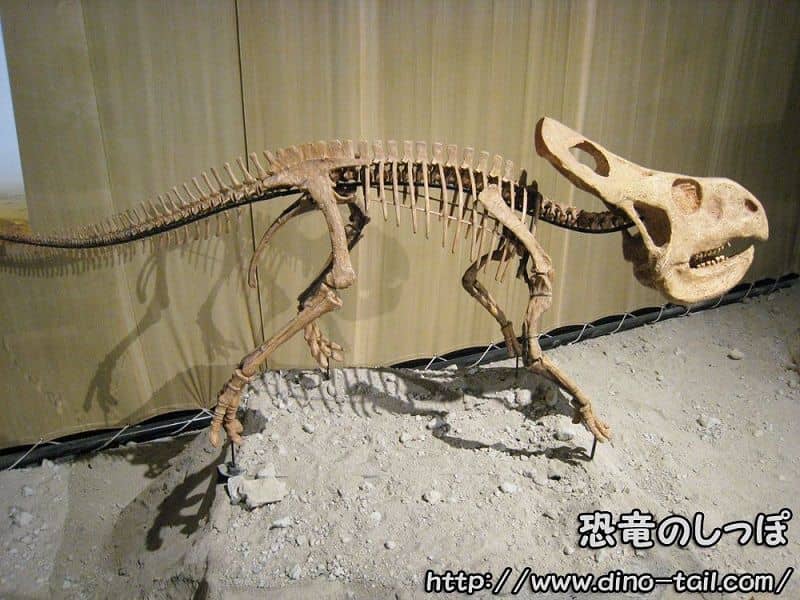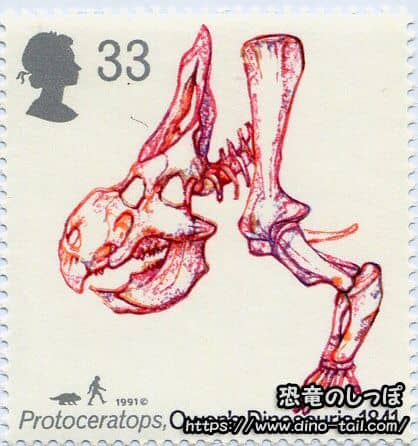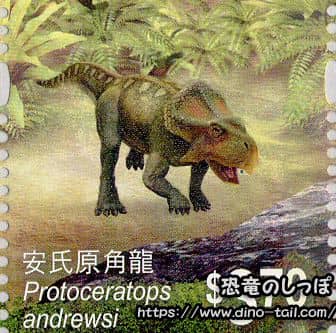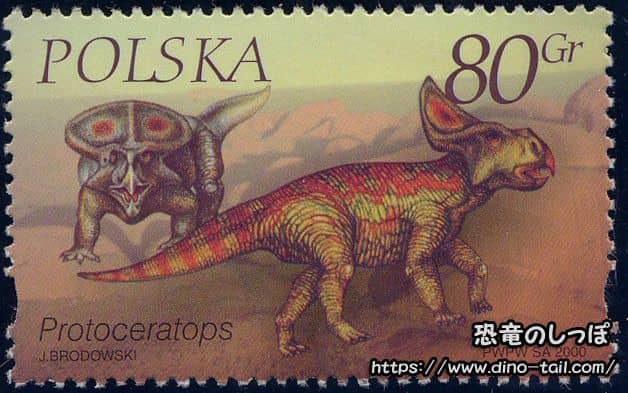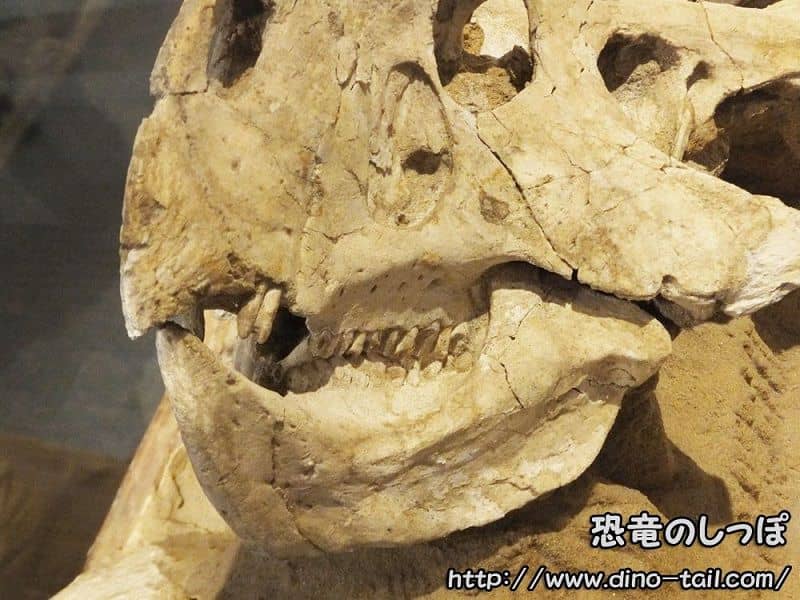About Protoceratops
| Scientific Name (Genus) | Protoceratops |
| Meaning of Name |
First horned face
protos (first) [Greek] - kerat (horn) [Greek] - ops (face) [Greek] |
| Classification | Ornithischia, Marginocephalia (Ceratopsia) |
| Total Length | Approx. 2m |
| Diet | Herbivorous |
| Period | Late Cretaceous |
| Species |
Protoceratops andrewsi
(type species)
Protoceratops hellenikorhinus |
| Year of Paper Publication | 1923 |
Features
Protoceratops was a ceratopsian that lived in and around Mongolia. It had a developed frill and the hard beak characteristic of ceratopsians, but no horns.
It was once thought to be an early ceratopsian, an ancestor to many others, but it is now considered to be a genus that established itself while retaining primitive features.
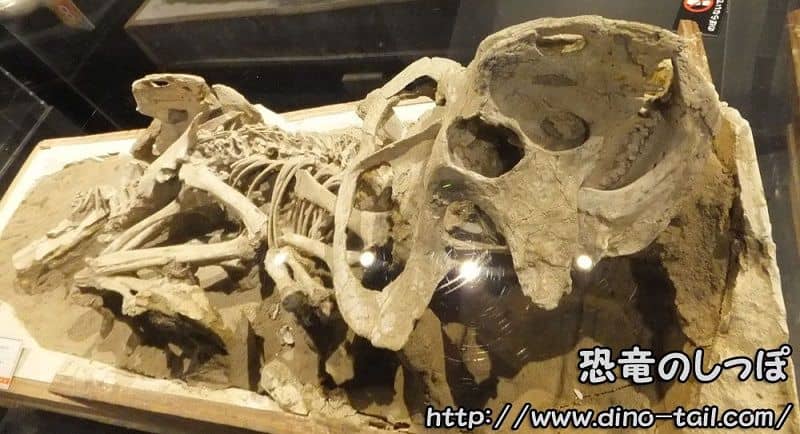
Some scholars believe its tail shape was adapted for swimming, but there is no conclusive evidence.
Because numerous fossils from various growth stages, from babies and juveniles to adults, have been found, Protoceratops plays an important role in the study of ceratopsian growth.
It is also thought that as adults, there were differences in the shape of the frill between males and females ( sexual dimorphism ). Males seem to have had taller, wider frills, while females had lower, narrower ones. This was likely used primarily for display to attract mates and for contests of rank with rivals.
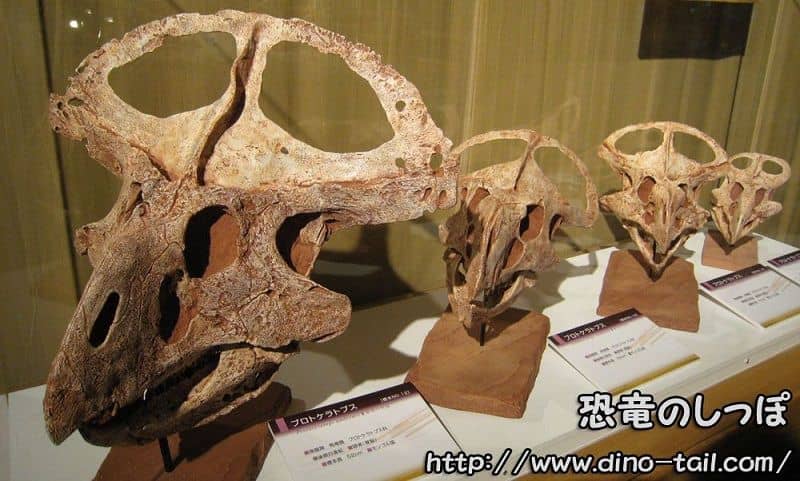
The skulls grow from back to front.
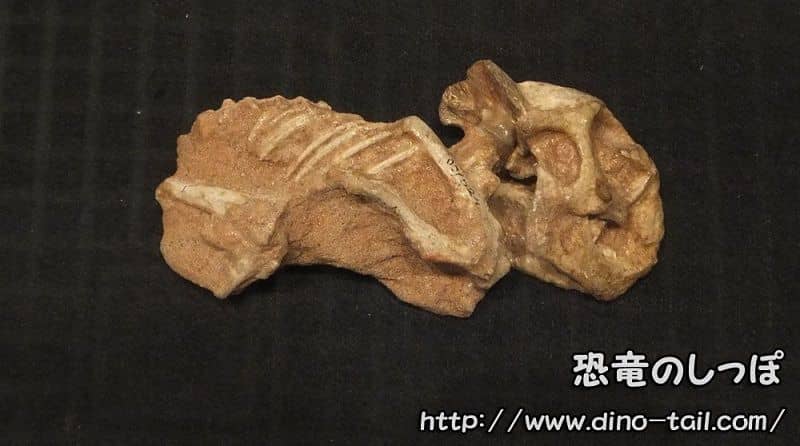
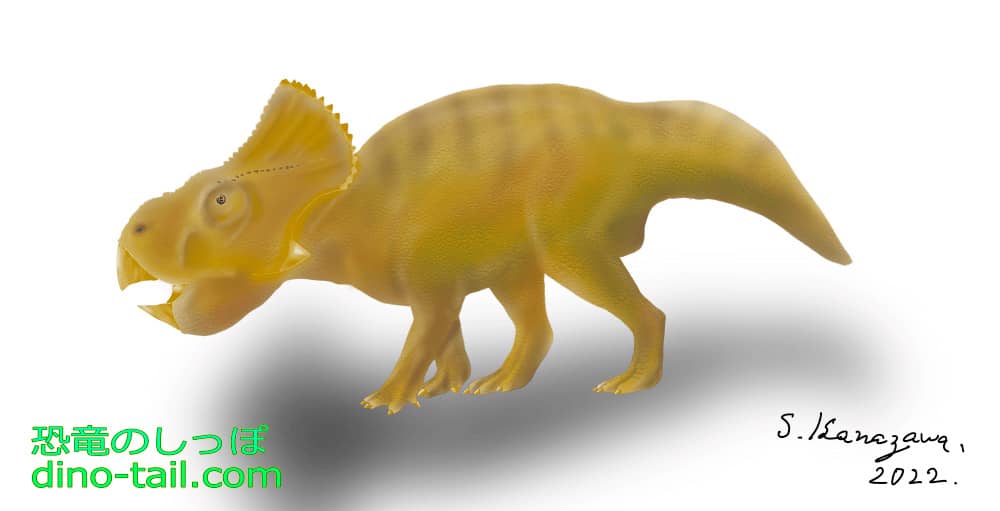
The Fighting Dinosaurs Fossil
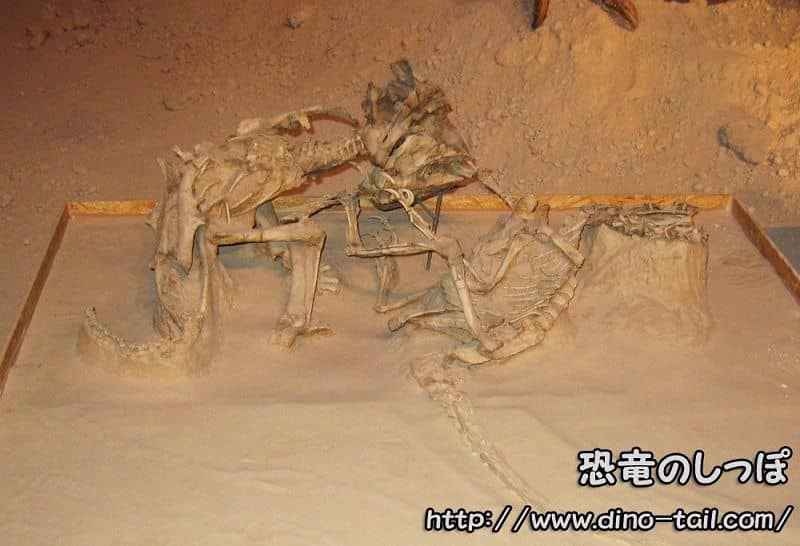
In 1971, an interesting fossil was discovered in the Gobi Desert, which spans China and Mongolia.
It is a fossil that records a fight between a Protoceratops and a ferocious carnivorous dinosaur, Velociraptor, from about 83 million years ago.
The Velociraptor's left hand is on the Protoceratops's frill, and its left foot is kicking its belly. The Protoceratops was also counterattacking, firmly biting the Velociraptor's right arm.
Because it is a rare fossil that captures a tense scene from that time, it is often used in encyclopedia illustrations and figures.
Protoceratops Parenting
Very moving evidence has been discovered that Protoceratops cared for its young. A fossilized nest, about 70 cm in diameter, reported in 2011, contained the fossilized remains of at least 15 newly hatched babies buried together.
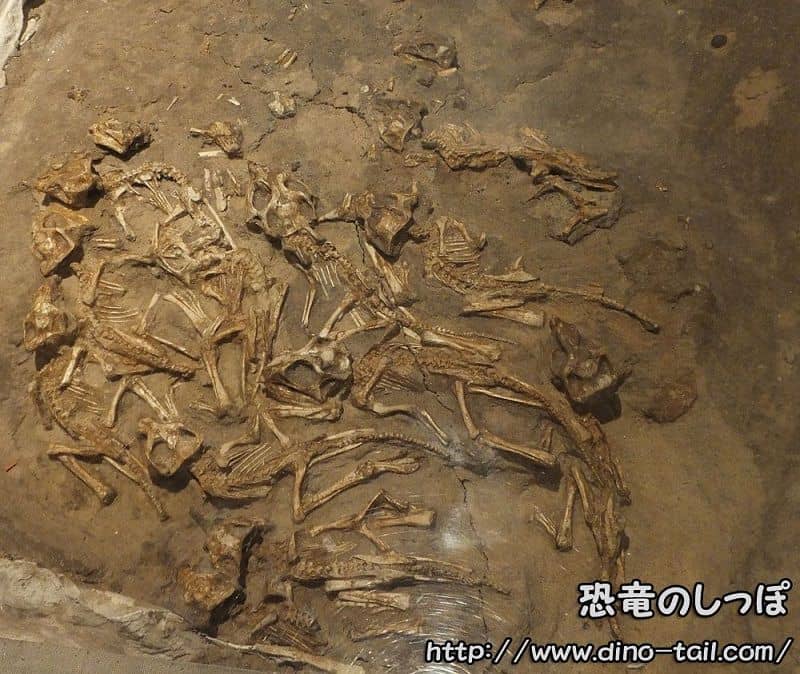
It contains 15 juveniles estimated to be one year old.
The fact that so many young were in the same nest suggests that they stayed in the nest for some time after hatching under the protection of their parents. This is one of the earliest direct pieces of evidence for 'in-nest parental care' in ceratopsians.
The remarkable thing about this fossil is that 'this nest contained the fossilized remains of 15 babies, estimated to be about one year old.' The frill was not very developed. This suggests that Protoceratops were raised in the same group until they were about one year old.
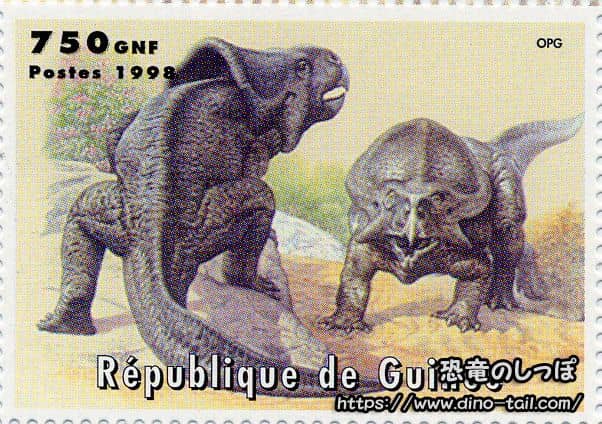
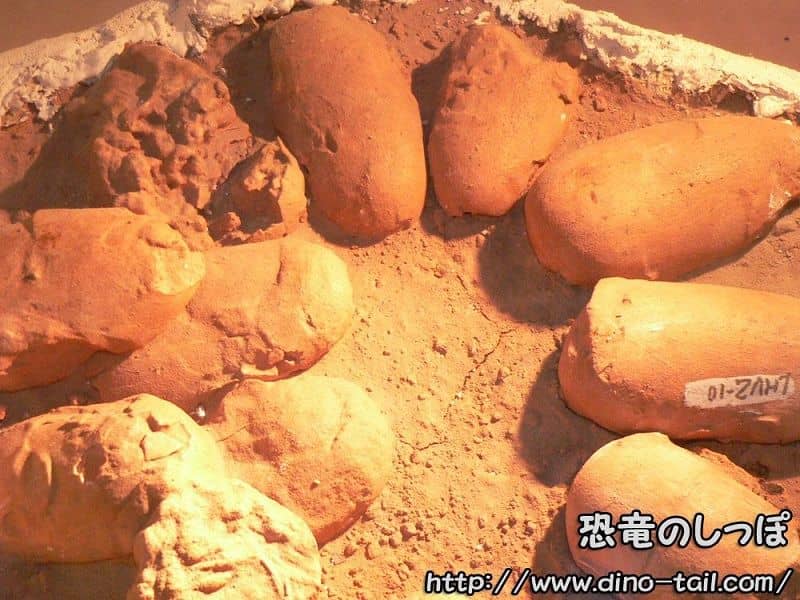
The Origin of the Legendary Griffin?
A very romantic theory has been proposed for Protoceratops: that its fossils may have been the model for the legendary creature from ancient Greek mythology, the 'griffin.'
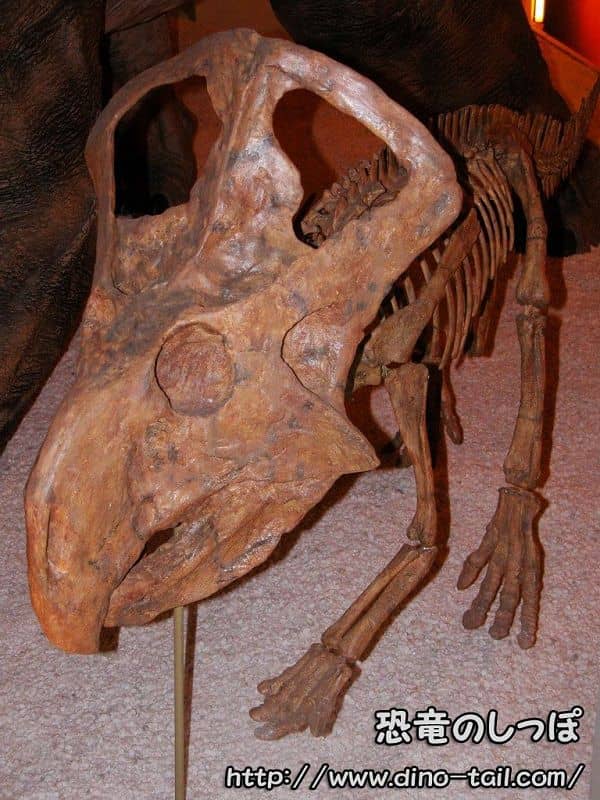
The griffin is said to have the 'head and wings of an eagle and the body of a lion.' According to historian Adrienne Mayor, the ancient Scythians, who were searching for gold in the Gobi Desert, may have discovered Protoceratops fossils and transmitted their appearance to Greece through oral tradition.
- The powerful beak of Protoceratops became the 'eagle's beak.'
- The shoulder blades became the 'base of the wings.'
- The four-legged body became the 'lion's torso.'
- The weathered frill became the 'large ears.'
...and so on, the features of the fossil were likened to the appearance of the griffin. While the truth of this is uncertain, it is a very interesting hypothesis to consider the possibility that ancient fossils stimulated the imagination of ancient peoples.
Protoceratops Stamp & Fossil Gallery
